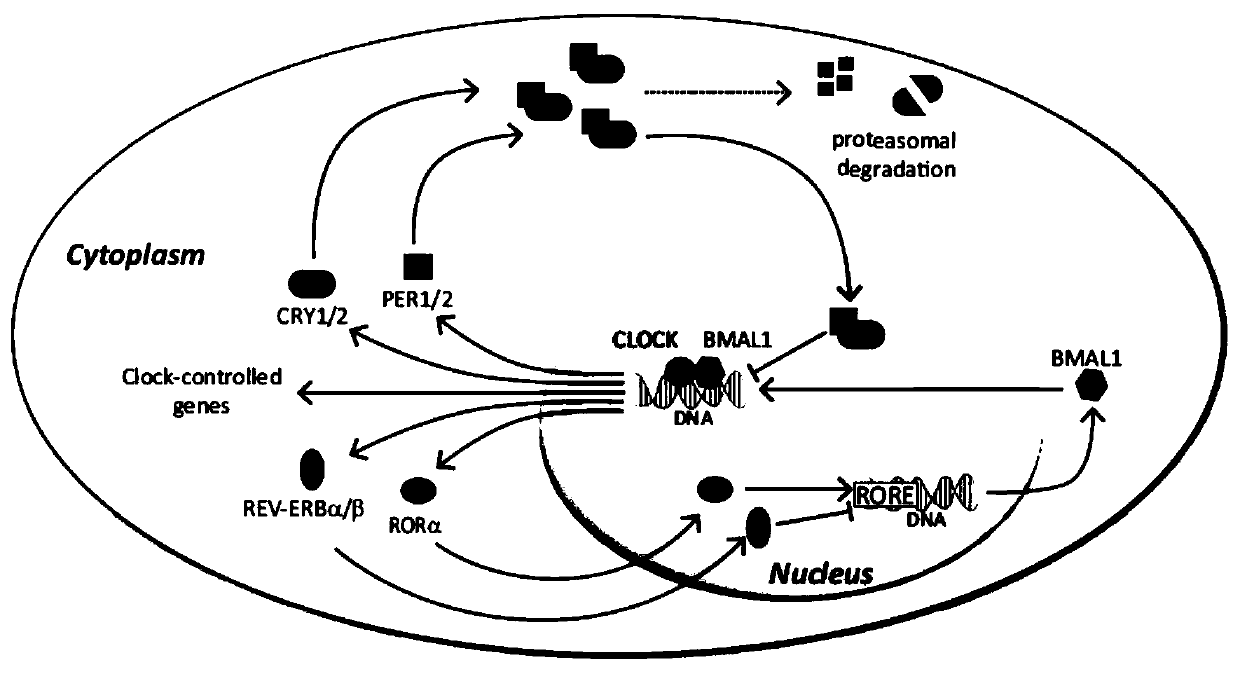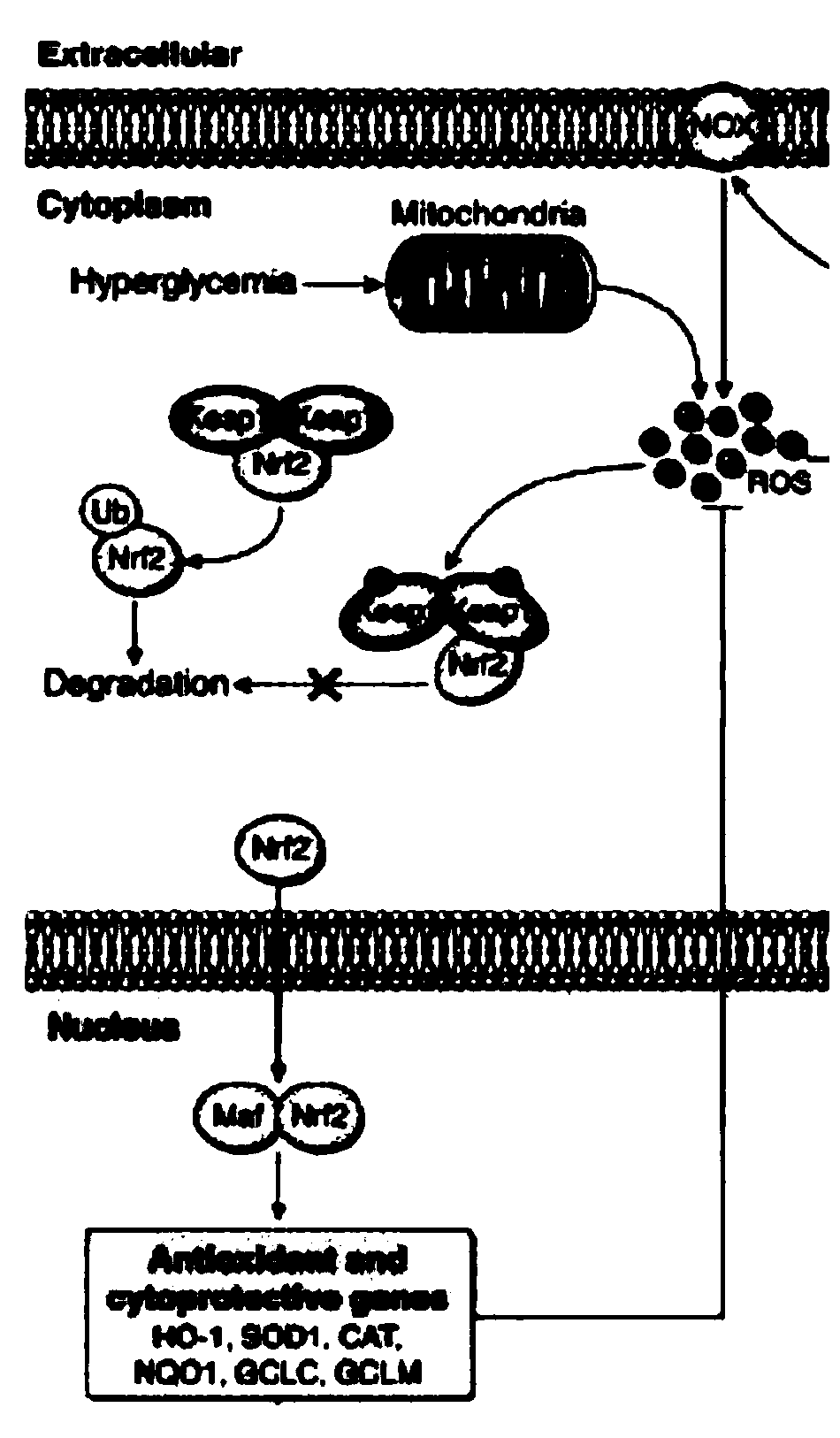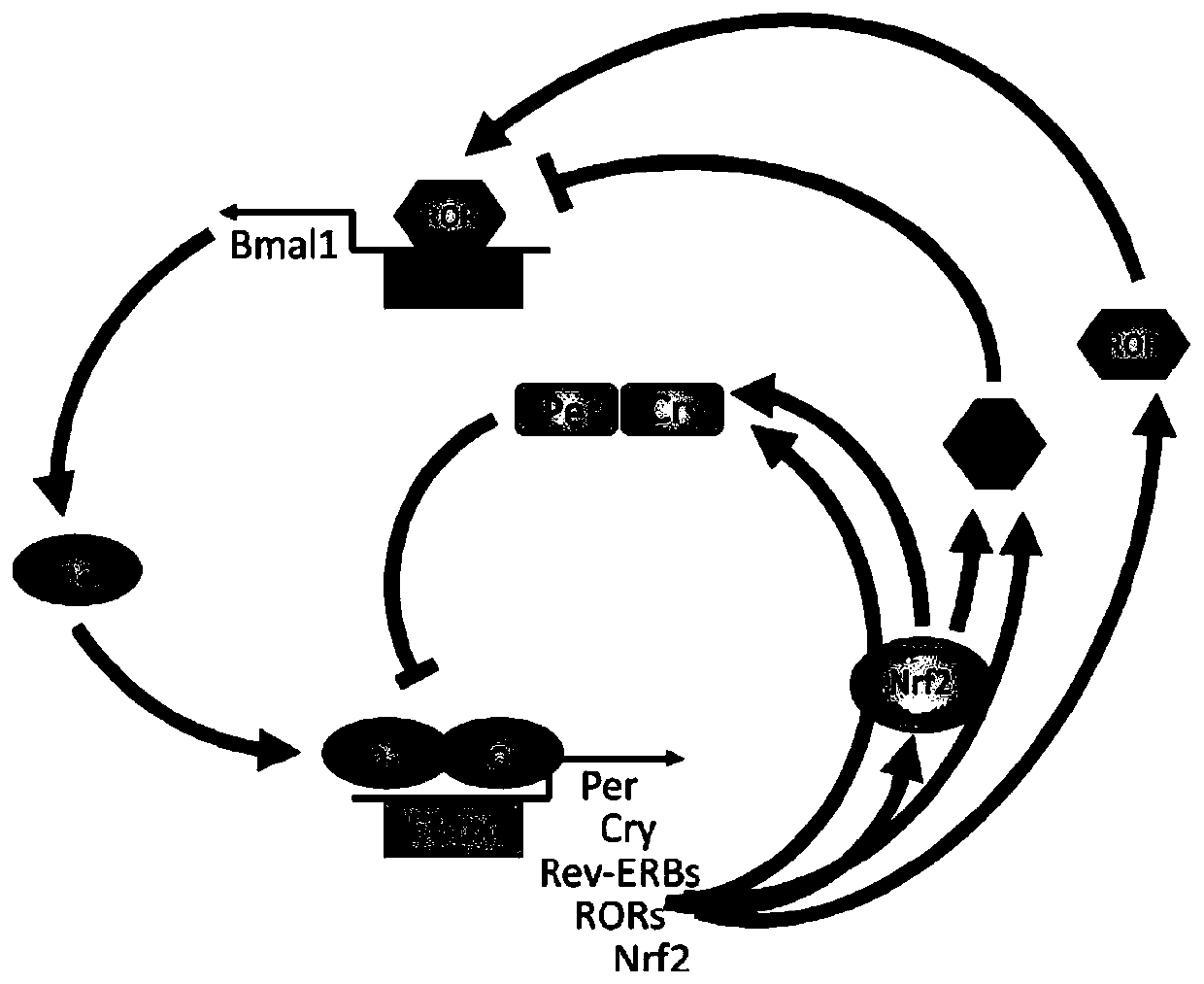Application of NRF2 protein in preparation of drug for regulating biorhythm
A biorhythm, 1. NRF2 technology, applied in the field of regulating biorhythm, can solve the problems of slow response and easy interference of biorhythm regulation technology, and achieve the effect of rapid regulation without interference
- Summary
- Abstract
- Description
- Claims
- Application Information
AI Technical Summary
Problems solved by technology
Method used
Image
Examples
Embodiment 1
[0049] The purpose of the study on the regulation of NRF2 protein on biological rhythms is to study NRF2 by reducing the synthesis of NRF2 protein, promoting the decomposition of NRF2 and increasing the synthesis of NRF2 by taking the mouse embryonic fibroblast cell line NIH / 3T3 cells as the research object. The expression and rhythmic changes of biological rhythm proteins CLOCK and BMAL1 were studied to study the influence of NRF2 protein on biological rhythm.
[0050] The process and results are shown below.
[0051] 1. Reducing the synthesis of NRF2 can regulate the content of rhythmic proteins CLOCK and BMAL1:
[0052] 1. NRF2 siRNA screening that can reduce NRF2 synthesis:
[0053] a. Experimental method:
[0054] RNA interference technology is a common technique to reduce protein synthesis. Through cell transfection technology, the RNA interference agent siRNA is completely paired with the messenger RNA corresponding to the target protein to inhibit the transcription ...
Embodiment 2
[0169] The regulation and mechanism of bortezomib BTZ on circadian rhythm, the purpose of which is to use the mouse embryonic fibroblast cell line NIH / 3T3 cells as the research object, use bortezomib BTZ to activate NRF2, and use all-trans retinoic acid ATRA to inhibit NRF2 To study the effect of bortezomib on the content and rhythm of biological rhythm proteins CLOCK and BMAL1; to study the molecular mechanism of bortezomib to regulate biological rhythm by detecting the combination of NRF2 protein with Clock and Bmal1 genes.
[0170] The process and results are shown below.
[0171] 1. BTZ can regulate the content of rhythmic proteins CLOCK and BMAL1:
[0172] 1. Effects of different concentrations of BTZ and ATRA on NRF2 activity:
[0173] a.Experimental method
[0174] After the NRF2 protein is activated (not necessarily increased in content), it enters the nucleus, combines with downstream genes, promotes the expression of these genes and protein synthesis, thereby incre...
PUM
 Login to View More
Login to View More Abstract
Description
Claims
Application Information
 Login to View More
Login to View More - R&D
- Intellectual Property
- Life Sciences
- Materials
- Tech Scout
- Unparalleled Data Quality
- Higher Quality Content
- 60% Fewer Hallucinations
Browse by: Latest US Patents, China's latest patents, Technical Efficacy Thesaurus, Application Domain, Technology Topic, Popular Technical Reports.
© 2025 PatSnap. All rights reserved.Legal|Privacy policy|Modern Slavery Act Transparency Statement|Sitemap|About US| Contact US: help@patsnap.com



